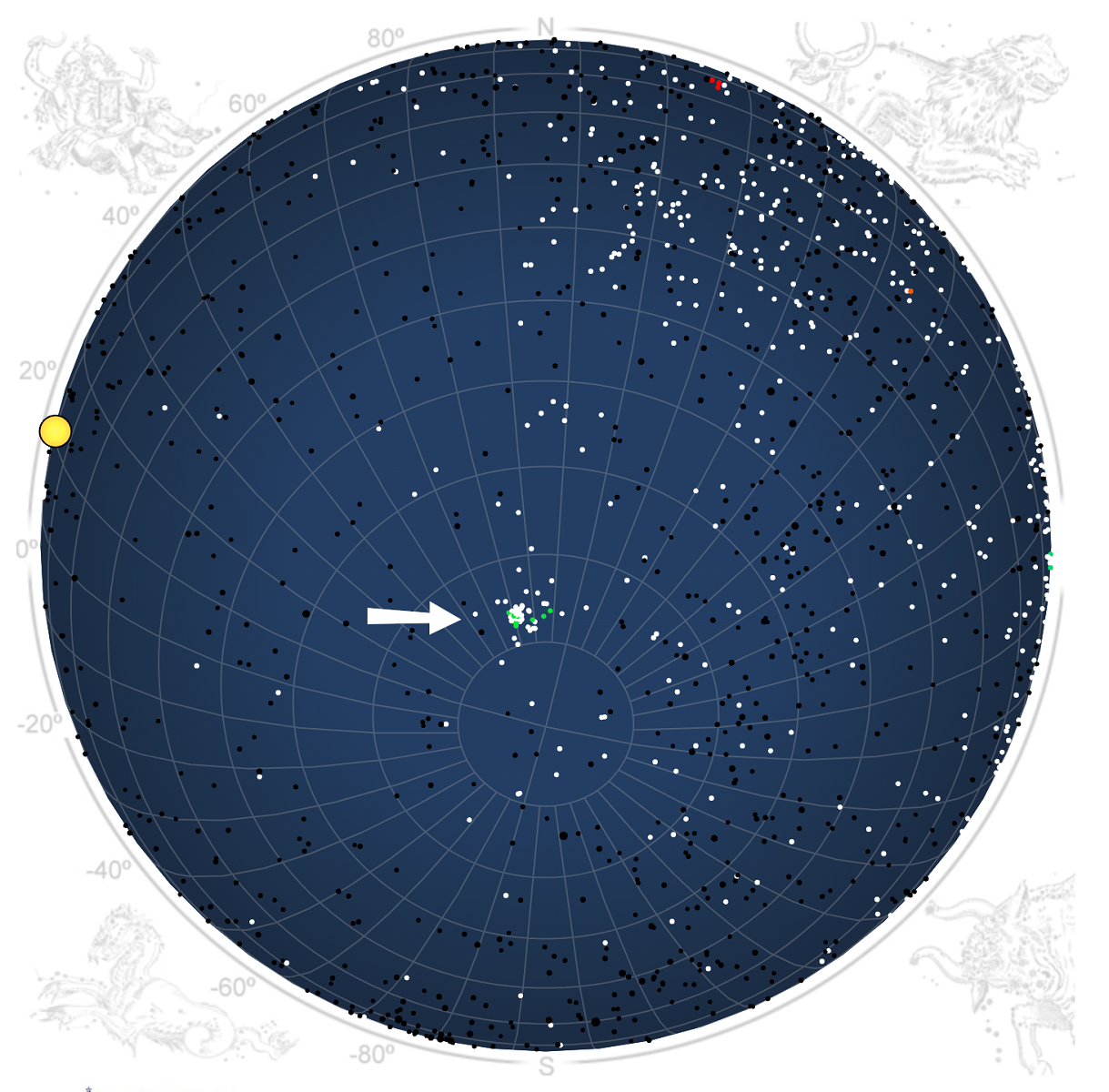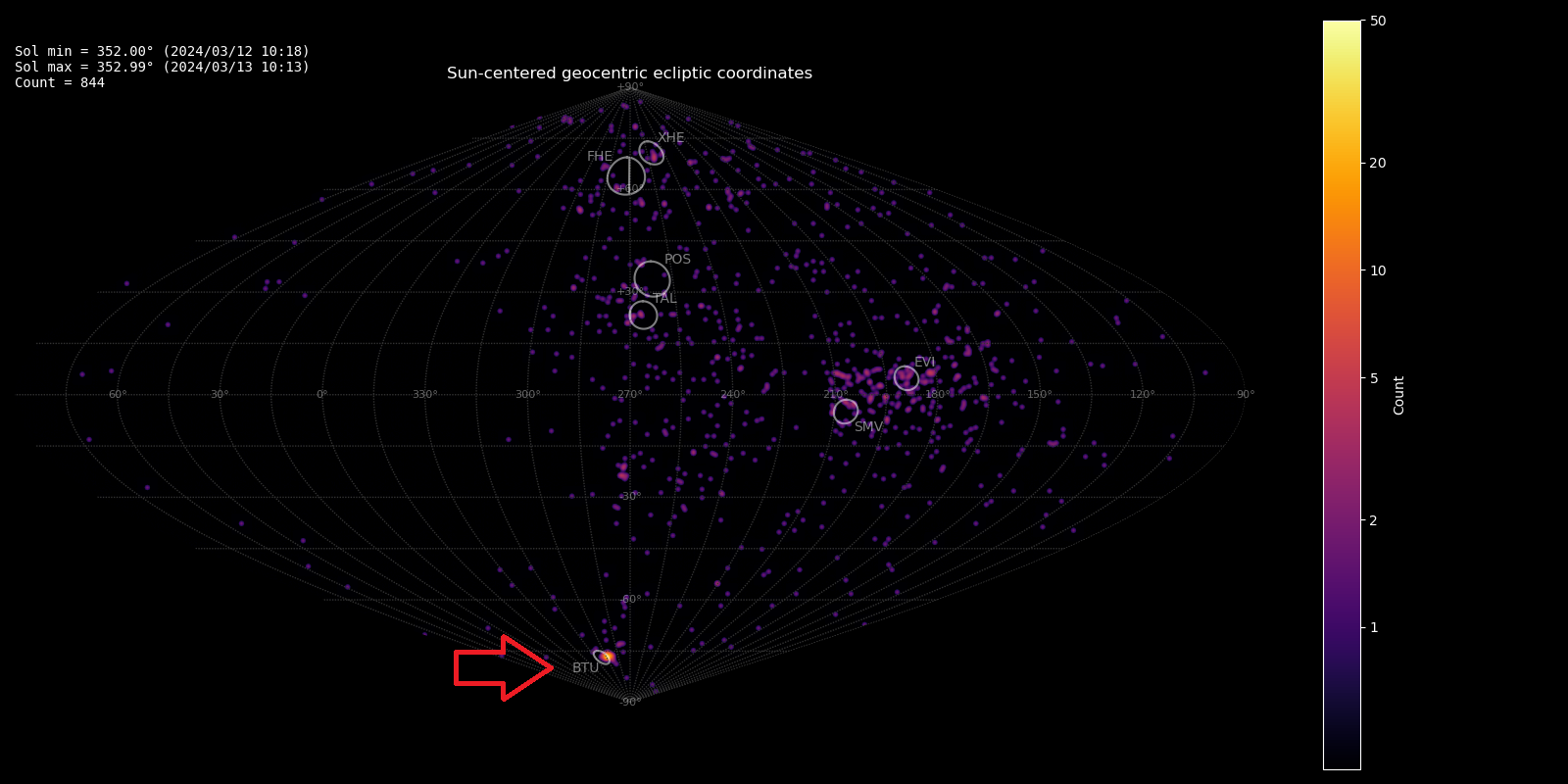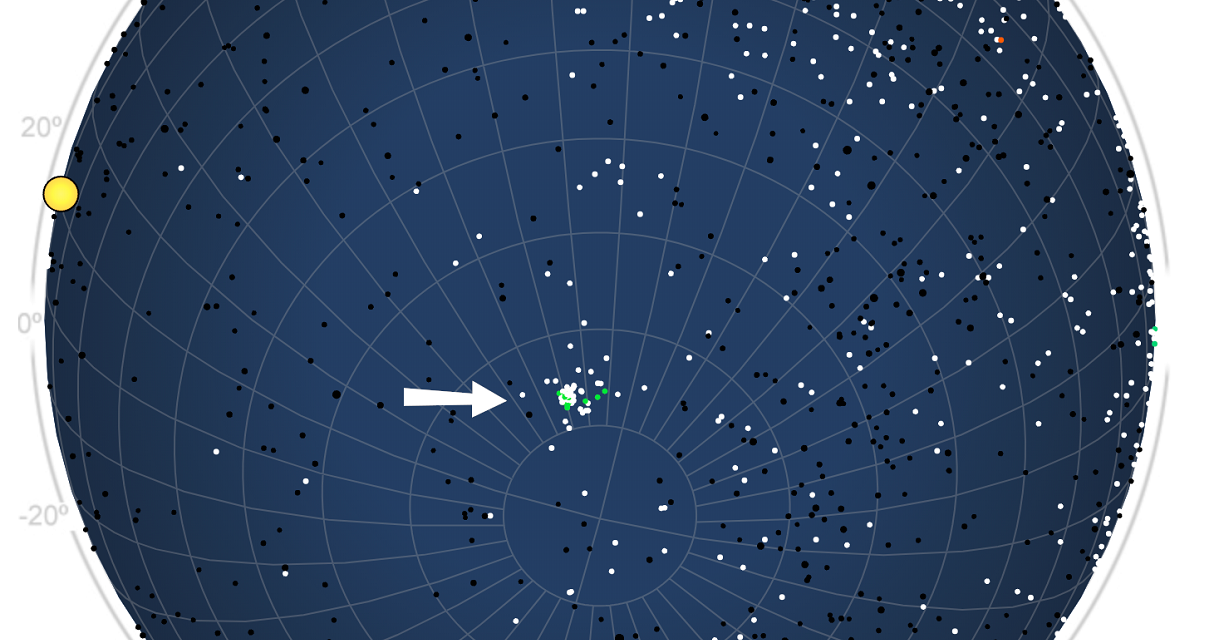Abstract: Significant activity of beta-Tucanids was detected by CAMS and GMN low-light video camera networks in 2024. This observation adds to two previously recorded outbursts in 2020 and 2021 and further illustrates past activity from now dormant Jupiter-family comet 2006 CS.
Introduction
Strong activity of the beta-Tucanids (BTU#108) was detected by SAAMER radar observations in 2020 (Janches et al., 2020). Janches et al. identified the parent body of this shower as minor planet (248590) 2006 CS, which based on the Tisserand parameter with respect to Jupiter is a now dormant Jupiter-family comet.
The shower stands out from the overlapping delta-Mensids meteor shower (IAU #130) by having a lower entry speed of 30.6 km/s on average, as compared to 37.0 km/s for the more diffuse delta-Mensids. The difference corresponds to a Halley-type orbit for the delta-Mensids, but a Jupiter-family type orbit for the beta-Tucanids.
Past observations of the beta-Tucanids are summarized in Jenniskens (2023), where the shower is given as episodic. However, there may be a more diffuse annual activity associated with this shower. Indeed, the shower appears to have been detected by radar as far back as 1969 (Gartrell, 1972; Gartrell & Elford 1975).

Figure 1 – The plot of the radiants obtained by the CAMS networks for the date of 2024 March 12.
2024 observations
The 2024 beta-Tucanids were first detected by CAMS Chile (S. Heathcote and T. Abbott, NOIRLAB/Cerro Tololo; and E. Jehin, University of Liege) on Mar. 12 at 4h UTC (N = 5 Beta Tucanid meteors), then peaked over CAMS New Zealand (coordinated by J. Baggaley, University of Canterbury; and J. Scott, University of Otago) starting at 8h UTC (N = 20), followed by CAMS Australia (H. Devillepoix, Curtin University; and D. Rollinson) starting at 14h UTC (N = 6). A late shower member was detected by CAMS New Zealand on Mar. 13 at 8h29m UTC. The networks in New Zealand (J. Scott) and Australia (D. Rollinson) are part of the Global Meteor Network, coordinated by D. Vida. Note that the network by J. Scott expanded dramatically the number of cameras participating in CAMS New Zealand in 2024. Indeed, the shower was also clearly detected in the Global Meteor Network (Fig. 2).

Figure 2 – The beta Tucanid activity in 2024 has been confirmed by the Global Meteor Network.
Table 1 – The 2024 orbital elements (Equinox J2000.0) compared to the median 2021 orbit from Jenniskens (2023).
| 2021 | 2024 | |
| λʘ (°) | 352.26 | 352.03 +/- 0.03 |
| αg (°) | 62.1 | 66.2 +/- 2.1 |
| δg (°) | –77.4 | -78.2 +/- 0.6 |
| vg (km/s) | 30.6 | 30.8 +/- 0.7 |
| λ – λʘ (°) | 304.3 | 298.1 |
| β (°) | –76.8 | -76.4 |
| a (AU) | 2.86 | 2.83 +/- 0.45 |
| q (AU) | 0.977 +/- 0.004 | 0.9810 +/- 0.0016 |
| e | 0.658 +/- 0.058 | 0.654 +/- 0.046 |
| ω (°) | 344.0 +/- 2.3 | 345.3 +/- 0.9 |
| Ω (°) | 172.3 +/- 0.2 | 172.05 +/- 0.24 |
| i (°) | 51.0 +/- 1.5 | 51.8 +/- 0.7 |
| Π (°) | 156.0 +/- 2.3 | 157.7 +/- 1.6 |
| Tj | 2.23 | 2.44 |
| N | 26 | 47 |
Discussion
In 2020, when SAAMER detected the outburst, CAMS observations showed a compact radiant on March 12, confirming the outburst, but only 7 meteors were triangulated. Since that time, the activity has been variable. In 2021, 38 beta-Tucanids were triangulated on March 12 and 13 (Jenniskens, 2021). In 2022, 12 meteors were triangulated on these dates, but that activity was spread out more in solar longitude. In 2023, only 5 meteors were triangulated on those dates, again spread out. So, it is unclear that there was an outburst in 2022 and 2023.
The peak time of the narrow outburst component changes from year to year. In 2020, the shower peaked at solar longitude = 352.38 ±͚ 0.09 deg (standard error) with full-width-at-half-maximum = 0.76 deg. In 2021, the shower peaked at 352.27 ±͚ 0.04 deg with FWHM = 0.59 deg. In 2024, the shower peaked at solar longitude 352.03 ±͚ 0.03 deg with FWHM = 0.43 deg. The slightly narrower width in 2024 may be on account in part by the higher number of cameras in New Zealand since 2021.
These new observations may help determine when minor planet 2006 CS last disrupted, causing the narrow meteoroid stream that now wanders on occasion in Earth’s path.
References
Gartrell G. A. (19721). “Southern Hemisphere Radio Meteor Orbit Survey”. Proceedings of the Astronomical Society of Australia, 2, pages 89-90.
Gartrell G. , Elford W. G. (1975). “Southern hemisphere meteor stream determinations”. Australian Journal of Physics, 28, 591-620.
Janches D., Bruzzone J. S., Weryk R. J., Hormaechea J. L., Wiegert P., Brunini C. (2020). “Observations of an Unexpected Meteor Shower Outburst at High Ecliptic Southern Latitude and Its Potential Origin”. The Astrophysical Journal Letters, 895, id.L25, 6 pages.
Jenniskens P. (2021). “Beta Tucanids (BTU #108) meteor outburst in 2021”. eMetN, 6, 330-331.
Jenniskens P. (2023). Atlas of Earth’s Meteor Showers. Elsevier, USA. pages 766-767.






